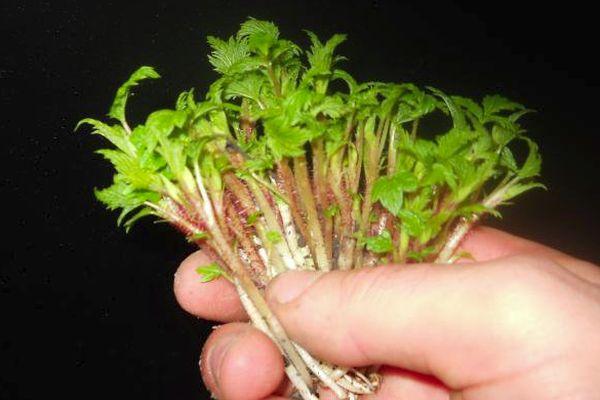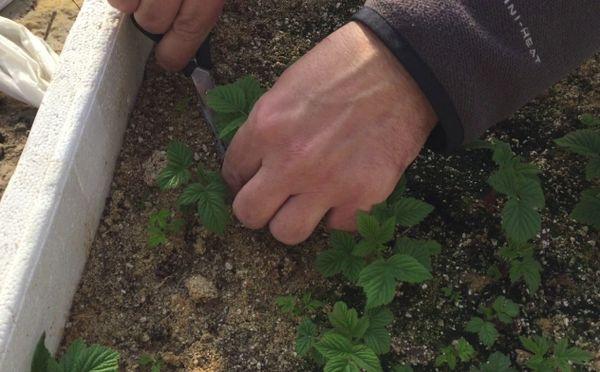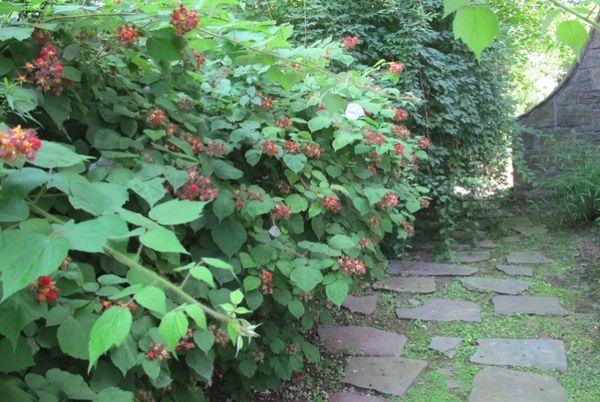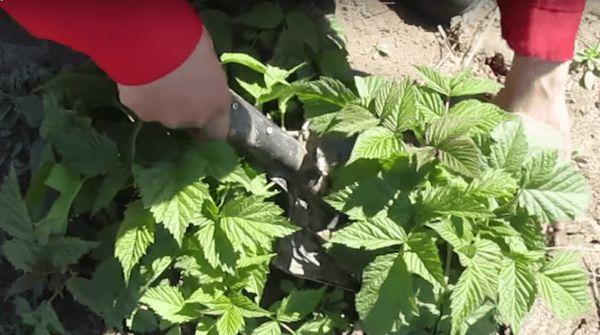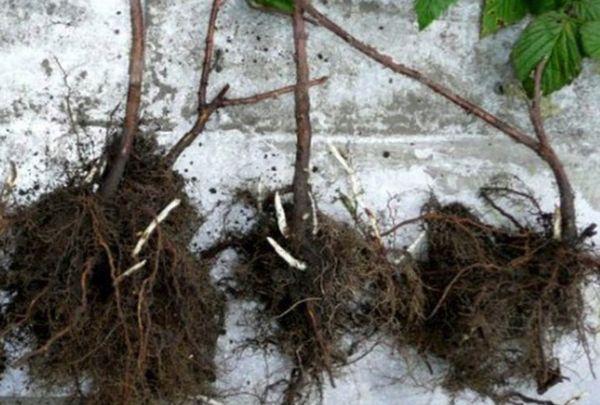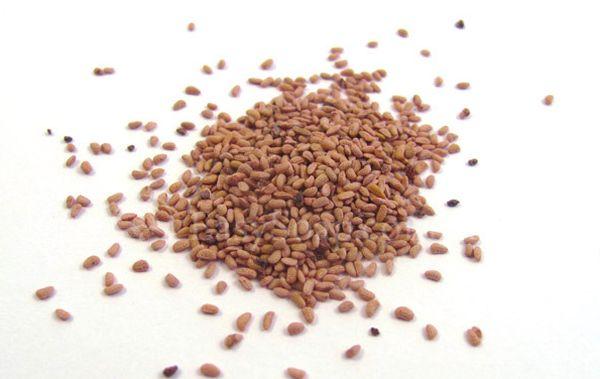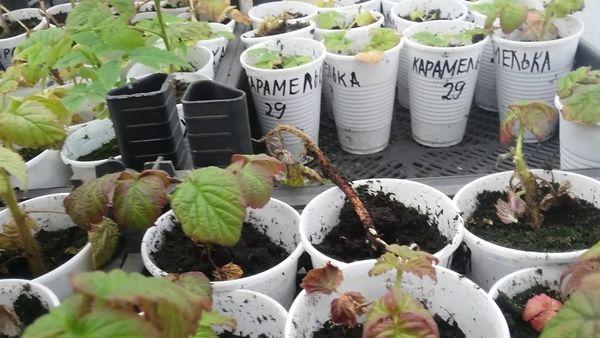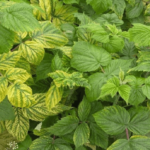Remontant raspberries are characterized by prolonged fruiting during the growing season. It’s no wonder why many gardeners are wondering how to properly propagate remontant raspberries. When growing any agricultural crop, every summer resident wants to get as much harvest as possible. That is why such hybrids quickly became popular among gardeners.
- When should planting material be prepared?
- Methods and technology for propagating remontant raspberries
- The "nettle" method
- Green cuttings
- Rooting with lignified cuttings
- Dividing the bush
- Propagation by root cuttings from the mother bush
- Stem cuttings
- Propagation by horizontal layering
- Sprouting from seeds
- Tips for beginner gardeners
When should planting material be prepared?
Before propagating raspberries, you should decide on the timing of harvesting planting material. You should choose the period when you need to harvest raspberries based on the planting time. For propagation by cuttings, seedlings are harvested in the spring. Most often, raspberries are grown in the spring, so it is recommended to choose planting material at this time.
When planting in autumn, the preparation of seedlings begins in the summer. When propagated in summer, seedlings are also prepared in spring.
Methods and technology for propagating remontant raspberries
There are several ways to grow remontant raspberries. If you follow all the rules of agricultural technology when planting, you will be able to quickly grow raspberry bushes that will bear fruit abundantly.
The "nettle" method
Remontant raspberries are propagated using the “nettle” method. This method is used in the spring. When raspberries begin to sprout, they look more like nettles. When planting, the shoots must be at least 10 cm in height and have two full leaves.
Planting raspberries using the “nettle” method:
- Rake the soil away from the base of the shoot.
- Cut off the shoot along with the white underground part of the stem (it can be 3-5 cm in length).
- Cut bushes are treated with drugs that activate growth.
- For planting, prepare a loose substrate (mix peat and sand).
- Plant a seedling; all the white underground part and part of the green shoot should remain underground.
- Water the bushes generously with warm water.
- Cover the bushes with bottles to create a greenhouse effect.
After a few weeks, the seedlings should take root. As soon as they get stronger, the raspberries are transplanted to a permanent place outside. Planting takes place towards the end of June.
Green cuttings
Propagating remontant raspberries from cuttings is quite simple. For this method, take healthy young shoots without signs of diseases or traces of insects. It is best to choose a cloudy day to prepare cuttings for planting.
Propagation of remontant raspberry varieties by green cuttings in summer:
- Cut off green young shoots with sharp pruning shears (it is recommended to cut closer to the base of the rhizome).
- Place in water, adding a growth stimulator.
- After some time, roots should appear on the cuttings.
- When the roots are large enough, the cuttings are transplanted into fertile, moist soil.
With proper care, the cuttings will very quickly begin to grow leaf mass and begin to bear fruit. After planting in open ground, they are watered abundantly. It will also not be superfluous to apply complex mineral fertilizers.
Rooting with lignified cuttings
Planting with lignified cuttings is done in the fall, in September-October. Annual shoots that have already become lignified are used as planting material.
Cuttings of remontant raspberry varieties in the fall:
- Cut the cuttings about 20 cm long.
- Remove all leaves; new buds have already appeared on the cuttings, and the foliage will only take away nutrients.
- Dig up the soil, dig holes.
- Place the cuttings in the holes so that only two buds remain on the surface.
- Cover with spruce branches or agrofibre.
- In the fall the shoots will take root and in the spring they will begin to grow actively.
Also, propagation by lignified cuttings is carried out in the spring. To do this, the stems are cut in the same way as in the first method. Then they are placed in boxes with damp sand and left in the refrigerator. In March, the cuttings are rooted at home, and when the weather warms up, they are planted.
Dividing the bush
Bush division is used most often when growing most crops. This method is suitable for plant propagation in the autumn. The optimal time for replanting is considered to be September-October, when the raspberries finish bearing fruit.
2-3 year old bushes are suitable for propagation by dividing the bush. The bush is cut into several parts with a sharp shovel and dug up. Then each part is transplanted to a new place. After planting, the soil around the raspberries is mulched so that they survive winter frosts well and do not die.
Propagation by root cuttings from the mother bush
It is easiest to propagate remontant raspberries from a mother bush. Root cuttings are suitable for propagation in this way. A root cutting is a part of a rhizome with a side branch. For propagation, roots more than 2 mm thick are used.
Root cuttings are separated from the mother bush in the spring:
- Cuttings are cut from the mother bush after it is covered with leaves.
- Then they are planted in holes about 5 cm deep.
- After this, the holes are filled with soil, lightly compacted and watered generously with warm water.
- After planting, it is recommended to cover the cuttings with film. Using this measure, you can create a greenhouse effect, and the bushes will grow faster.
When green leaves appear, the film is removed. But it is recommended to protect the seedlings themselves from bright sunlight and wind. As soon as the raspberries get stronger, the protection is removed.
Stem cuttings
Remontant raspberries can be propagated by stem cuttings. In terms of technology, the method is no different from other methods of growing raspberries from cuttings.
Propagation by horizontal layering
For horizontal cultivation, annual shoots are used.This type of breeding is carried out in the spring. A ditch 10-15 cm deep is dug next to the bush.
The shoots are bent to the ground and buried in soil. They need to be fixed in order to root. As soon as the stem begins to sprout and grow leaf mass, it is separated from the mother bush. There may be several seedlings. This method of reproduction is carried out in the summer.
Sprouting from seeds
Growing by seeds is not particularly popular among summer residents. This method is labor-intensive, time-consuming and not the most effective. This method is preferred by breeders to breed new varieties.
How to get raspberry seeds:
- To obtain the seed, the largest raspberries are collected and the juice is squeezed out of them.
- Then pour the juice along with water into a container and filter through cheesecloth. The procedure is repeated several times until the water becomes clear and the seeds remain at the bottom of the container.
Dry the seeds, place them in a paper envelope and put them in the refrigerator.
Before sowing raspberry seeds, stratification is carried out. To do this, fill the seeds with water and place the container in the refrigerator for 24 hours. After which they are mixed with sand. Pour sand with planting material into nylon stockings and put it in the cellar. The bags themselves are lined with sawdust. The seeds are stored in the cellar for about 3 months.
Planting material is planted after the room temperature reaches +20 degrees. Plant the seeds in containers with fertile soil. To create a greenhouse effect, containers are covered with cling film and placed on southern windows.
The seedlings are transplanted into separate pots after they grow to a height of about 10 cm. When warm weather sets in outside, they are planted in open ground.
Tips for beginner gardeners
In order for remontant raspberry varieties to take root faster after planting and produce a rich harvest, it is necessary to follow the rules for caring for the bushes:
- To make cuttings more active, before planting raspberries, the soil is fertilized with mineral and organic fertilizers.
- For the winter, the planted bushes are covered with spruce branches or agrofibre.
- It is recommended to plant raspberries in well-lit areas and in fertile soil.
- When propagated by green cuttings, to accelerate the emergence of roots, the lower part of the cutting is treated with growth activators for agricultural crops.
- It is undesirable to plant seedlings in lowlands, where water accumulates and stagnates in the spring.
- Young seedlings are regularly fed with mineral and organic fertilizers.
- To prepare cuttings for planting, only sharpened pruning shears are used. There should be no creases in the cut areas.
With proper care, raspberry cuttings will quickly take root in a new place, and the next year after planting they will begin to bear fruit.

